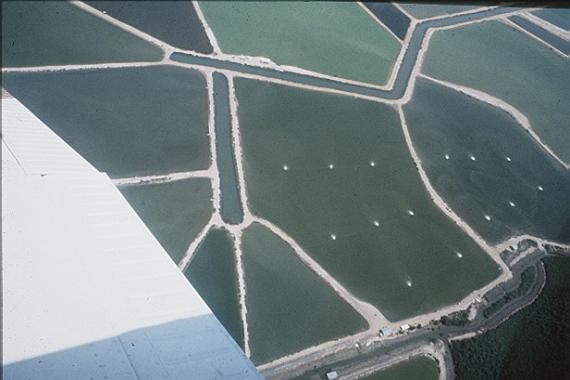| Semi-intensive grow-out systems | |
|
Semi-intensive shrimp ponds are relatively recent. Most development has occurred during the past 15 to 20 years. They are efficient and profitable to operate, but depend on a reliable seed supply, and greater management intervention in the pond's operation than with extensive ponds. Most seed for semi-intensive culture come from hatcheries, or from seed collectors who capture wild seed and sell them to the farms. Management is needed to affect satisfactory dissolved oxygen content, timely water exchange, nursery operations, appropriate feeding, and control of unwanted intruders. Skilled labor needs per unit land area increase greatly for semi-intensive ponds relative to extensive ponds, although there is a corresponding increase in shrimp production (Fast, 1992). Semi-intensive pond systems in Latin America evolved quite differently from those in Asia. Latin American farms rely almost exclusively on high water exchange rates by diesel driven pumps to maintain water quality. Electric or diesel driven aerators are rare in Latin America. In Asia, electric aerators and electric water pumps are far more common. Much less water is exchanged in semi-intensive Asian shrimp ponds. Perhaps the main reason for the differences had to do with low fuel prices in some Latin American countries, particularly Ecuador. In most Asian countries, fuel is expensive and electrical service is the system of choice (Fast, 1992). |
|
 Conducted
above the high tide line, semi-intensive farming introduces carefully
laid out ponds (2 to 30 hectares), feeding
Conducted
above the high tide line, semi-intensive farming introduces carefully
laid out ponds (2 to 30 hectares), feeding